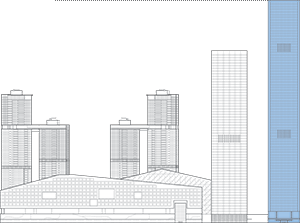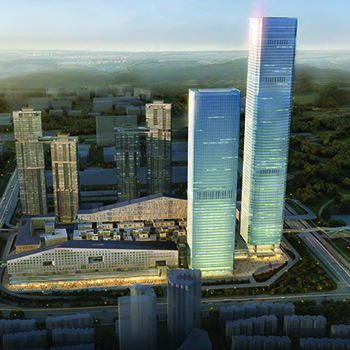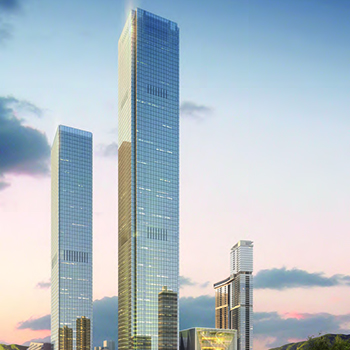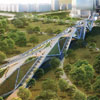Filter by
You must be a CTBUH Member to view this resource.

Shum Yip Upperhills
Complex
Completed
hotel / office / residential
Skidmore, Owings & Merrill LLP
628
Note: Only buildings that have GPS coordinates recorded are displayed.
|
RANK
|
Name
|
Completion
|
Height
|
Floors
|
Function
|
|---|---|---|---|---|---|
| 1 | Shum Yip Upperhills Tower 1 | 2020 |
388 m / 1,273 ft |
80 | Hotel / Office |
| 2 | Shum Yip Upperhills Tower 2 | 2017 |
299 m / 982 ft |
62 | Office |
| 3 | UpperHills North Tower 1A | 2015 |
230 m / 756 ft |
62 | Residential |
| 3 | UpperHills North Tower 2A | 2015 |
230 m / 756 ft |
62 | Residential |
| 5 | UpperHills North Tower 1B | 2015 |
179 m / 587 ft |
49 | Residential |
| 5 | UpperHills North Tower 2B | 2015 |
179 m / 587 ft |
49 | Residential |

18 October 2016
Yan Meng of Urbanus is interviewed by Chris Bentley during the 2016 CTBUH China Conference. Yan discusses the design process of the Shum Yip Upperhills...

12 January 2021
CTBUH Research
The Council on Tall Buildings and Urban Habitat has released its annual report, CTBUH Year in Review: Tall Trends of 2020, part of the Tall...

18 October 2016
Yan Meng of Urbanus is interviewed by Chris Bentley during the 2016 CTBUH China Conference. Yan discusses the design process of the Shum Yip Upperhills...
_©Hufton Crow.jpg)
18 October 2016
The issue of skyscraper form and expression being appropriate to cultural and social context is currently a hotly debated topic in China, as well as...

17 October 2016
Jovi Chu of Shum Yip Land Company Limited is interviewed by Chris Bentley during the 2016 CTBUH China Conference. Jovi discusses the design process of...

17 October 2016
Through analysis of dense urban high-rise building complexes as well as research on the relationship of those structures to a city's social organization, this presentation...

17 September 2014
This presentation begins with a discussion of the relationship between “architecture, environment and people” and suggests that the shaping of the environment in urban-complex projects...

12 January 2021
CTBUH Research
The Council on Tall Buildings and Urban Habitat has released its annual report, CTBUH Year in Review: Tall Trends of 2020, part of the Tall...

17 October 2016
Jovi Chu, Shum Yip Land Company Limited
Through analysis of dense urban high-rise building complexes as well as research on the relationship of those structures to a city’s social organization, this paper...

17 October 2016
Charles Besjak, Gary Haney, Preetam Biswas & Chung Yeon Won, Skidmore, Owings & Merrill LLP
Conventional legacy systems in the design of supertall towers employ belt trusses, outriggers, and perimeter-bracing to achieve the required tower performance at the expense of...

16 September 2014
Peter Kok, Shum Yip Land Company Limited
This paper begins with a discussion of the relationship between “architecture, environment and people” and suggests that the shaping of the environment in urban-complex projects...
Tim Griffith for KPF.jpg)
05 February 2018
This 2017 Tall Building Year in Review / Tall Buildings in Numbers data analysis report shows that more buildings of 200 meters’ height or greater...
Subscribe below to receive periodic updates from CTBUH on the latest Tall Building and Urban news and CTBUH initiatives, including our monthly newsletter. Fields with a red asterisk (*) next to them are required.
View our privacy policy